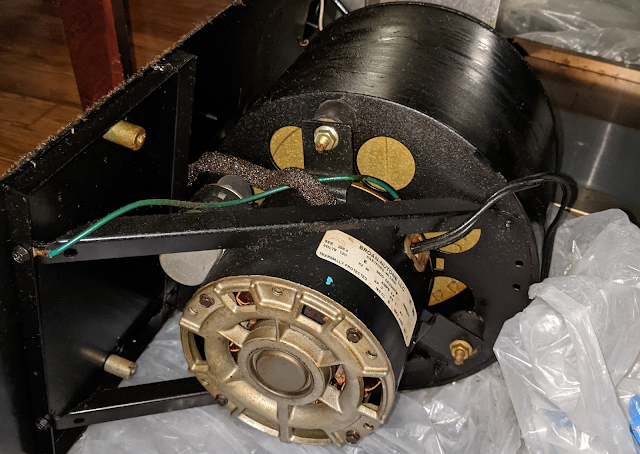I had armored cable aka Greenfield cable in my basement that had exposed conductors. In this post I will describe how I reduced the length of the wire and terminated it correctly in a junction box.
Armored cable has been around since 1899.
The armored aka greenfield cables in my home only have 2 conductors, hot and neutral but no ground. Newer cables have a ground. The metallic cladding around the cable unlike metallic tubing cannot be used as ground as per NEC.
For what ever reason, this particular cable had both conductors , back and white wired together - a switch loop. There wasn't an issue with the switch loop, however there was an issue having exposed wiring. I decided that it needed to be shortened and terminated correctly in a metallic junction box, attached to an exposed joist.
Rotary Cutter
The main tool required to cut armored wire is a rotary cutter. This is the one I use, and simply requires placing the cable in the tool and turning the handle clockwise. The blade digs into the spiral metal encasement and a cut to a single metal spiral is sufficient to separate the metallic covering
Since the cut is sharp, it is necessary to use anti short bushings to prevent the sharp edges from cutting into the conductor and causing a short circuit.
The work was fairly simple. It first involved turning off the electricity, and confirming that with a wire tester
Then using the wire cutter, I cut the wire at the length I wanted, leaving 6 inches extra. Once the outer clad is cut, it is possible to use some force to bend the cable. This results in the spiral metal clad separating from each other, and exposing enough of the 14ga wire inside to use regular wire cutters to cut it.
The next step was to expose about 6 inches of wiring that would reside in the junction box. The 14ga wire in this case is protected by varnished cloth that provides some degree of moisture resistance.
Armored cable need a special strain relief prior to their entry into the junction box. This avoids any safety issues incase someone accidentally tugs on the wire. I was able to reuse existing old work junction box and strain relief from another abandoned wire cleanup rather that purchasing new material
Once the wiring was correctly re-spliced to each other for the switch loop, I screwed the junction box to the stud. I also labelled it for future owners and covered any open holes with knock out seals


















